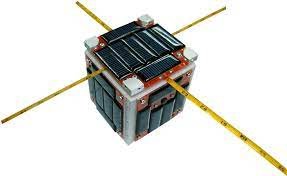Last Updated on August 17, 2023 by asifa
CubeSats are small, cube-shaped satellites that have revolutionised space exploration and research. These miniature satellites have opened new possibilities for scientists, researchers, and educational institutions to conduct experiments and gather data in space. In this article, we will delve into the world of CubeSats, exploring their characteristics, applications, and the impact they have had on space science.
CubeSats are standardised satellite units that measure 10x10x10 centimetres, with a maximum weight of 1.33 kilogrammes. Despite their small size, CubeSats are equipped with a variety of instruments and sensors that allow for data collection and experimentation in various scientific disciplines. They can be launched into space as standalone units or deployed in constellations for collaborative missions.
The compact and modular design of CubeSats enables cost-effective and rapid development. Researchers and educational institutions can design and build CubeSats using off-the-shelf components, making space exploration more accessible and affordable. This has democratised access to space, allowing a wider range of organizations to participate in scientific missions.
CubeSats have diverse applications in space science and exploration. They can be used for Earth observation, monitoring weather patterns, tracking climate change, and studying the Earth’s atmosphere. CubeSats also contribute to space research by investigating celestial bodies, such as planets, asteroids, and comets, providing valuable data for planetary science and astronomy.
Furthermore, CubeSats play a crucial role in technology demonstration and validation. New technologies and instruments can be tested in space using CubeSats, allowing for proof of concept and feasibility studies. This paves the way for future advancements in space exploration and the development of innovative technologies.
The collaborative nature of CubeSats has fostered international cooperation in space missions. Universities, research institutions, and space agencies from around the world collaborate on CubeSat projects, sharing resources, knowledge, and data. This collaboration promotes a global exchange of ideas and accelerates scientific discoveries.
However, CubeSats also present challenges. Their small size limits the amount of power, data storage, and communication capabilities they possess. Scientists and engineers must optimize the design and functionality of CubeSats to overcome these limitations and ensure the success of their missions.
In conclusion, CubeSats have revolutionised space exploration and research by providing a cost-effective and accessible platform for scientific missions. These miniature satellites enable a wide range of organizations to participate in space science, gather valuable data, and test innovative technologies. With their modular design and collaborative nature, CubeSats are propelling advancements in our understanding of space and the universe. To find out more, you can visit Cubesat.
Apart from this, if you want to know about Perfect Rug Placement In Your Space then please visit our Technology category















